Phoenix Chicken: Long-Feathered Beauties But High In Maintenance
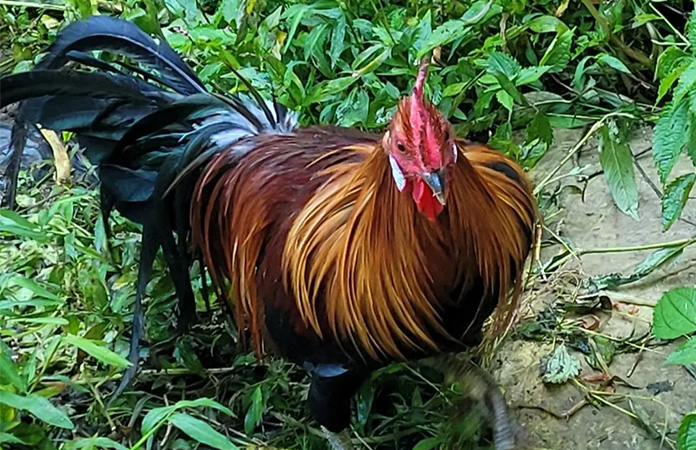
The Phoenix chicken is a breed that will turn heads with its gorgeous appearance. With long tail feathers that can reach an impressive length of 35 inches or more, this bird stands out in any flock. But they need more care and are not the most beginner-friendly breed.
- Phoenix hens lay around two to three eggs weekly
- Friendly but not a beginner-friendly breed
- Need a lot of space and higher perches
- Easily go broody
| Eggs | Maximum two to three per week |
| Egg Color | Cream or tinted |
| Egg Size | Small |
| Weight | 4 – 5.5 lbs |
| Hardiness | Stands heat better than cold |
| Temperament | Friendly but aloof and active |
| Beginner-friendly | No |
| Color | Three recognized colors |
Characteristics
The Phoenix chicken is a true beauty with its unique appearance. One of the most striking features of this breed is its long tail feathers. These feathers can reach an incredible length of 35 inches or more. The tail feathers are narrow, pointed, and straight, giving the bird an elegant look.
In addition to its remarkable tail feathers, Phoenix chickens have other distinctive physical features. The bird’s head is small and round, with a red comb and wattles. The eyes are dark and alert, giving the bird an intelligent look.
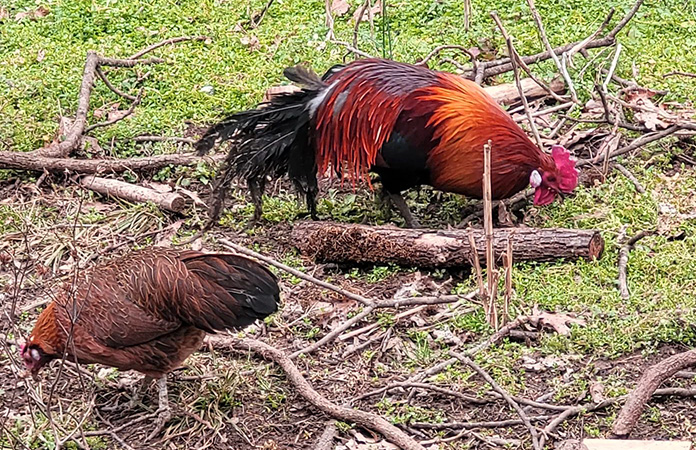
Their neck is slender, which adds to their overall gracefulness. The body is compact but muscular, with a well-defined chest.
Three color varieties are recognized in the APA Standard of Pefection: Silver, Golden, and Black Breasted Red.
Eggs and Egg Production
While the Phoenix chicken is certainly a handsome breed, it is not particularly known for its egg production. In fact, their egg production is considered to be poor, plus they are often broody.
The eggs that the Phoenix chicken lays are small in size and have a cream or tinted shell color. These eggs are suitable for eating, but small-scale farmers do not typically use this breed due to their small-sized eggs and low yield.
On average, a Phoenix hen will lay about two to three eggs per week. This is a relatively low rate of egg production compared to other breeds. However, it’s worth noting that the Phoenix chicken was not developed for egg production but rather for their long tail feathers and unique appearance.
The Phoenix chicken is not the best choice if you are looking for a great egg layer. However, if you are interested in raising these birds for their looks and personality, then they can make a wonderful addition to your flock. They also make great mothers!
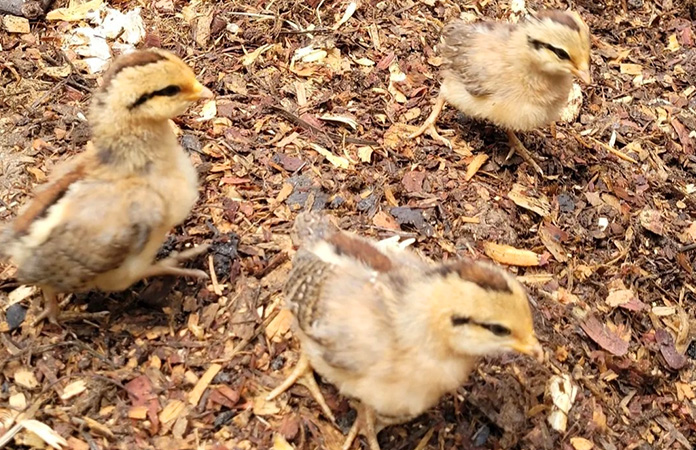
Phoenix Chicken Care Guide
Phoenix chickens are not a difficult chicken breed to raise, but they are considered to be high in maintenance and, therefore, less beginner friendly.
Caring for Phoenix chickens requires attention to certain needs, including enough space and high perches to accommodate their long tail feathers. The perches should be at least six feet off the ground, so the birds can comfortably roost without dirtying their feathers.
These birds are active and have a docile temperament, but they can also be aloof, so it’s important to handle them when they are young to ensure they become accustomed to human interaction.
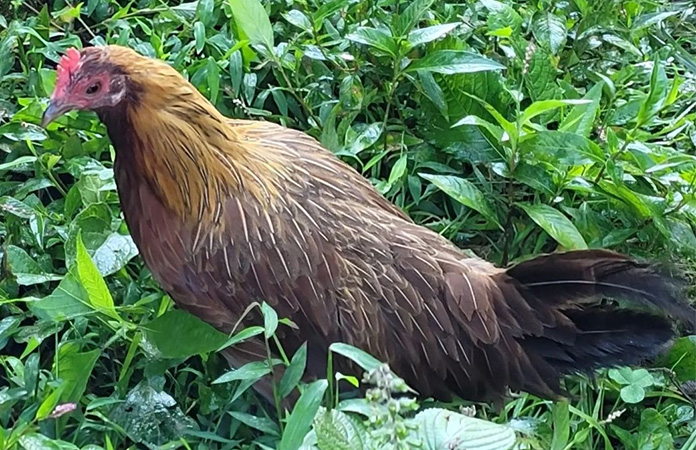
If you have children, teaching them to respect the chickens and avoid pulling their long tail feathers is essential. These birds are great free rangers and need plenty of space, do not keep them in small-sized runs; they won’t be happy. They can also be flighty, so covering the run if you don’t want them to escape is key.
This breed is hardy, but if you are raising Phoenix chicks, keep in mind they will need extra protein as soon as their tails start growing.
Personality
The Phoenix chicken’s unique personality makes it stand out. While it is considered a docile breed, it also tends to be aloof and independent. This means that it is not necessarily a cuddly pet, but it still an interesting bird to keep.
If you are looking for a heavily feathered pet chicken for your kids, the Phoenix is not the right choice, but take a look at our ‘10 Fluffy Chicken Breeds That Are Kid-Friendly‘.
These chickens are active, alert, and curious about their surroundings. They will often spend their days exploring and foraging, so providing them with plenty of space is important. As mentioned earlier, they can be flighty, so providing them with a covered outdoor space is a good idea if you want them inside a secured run.
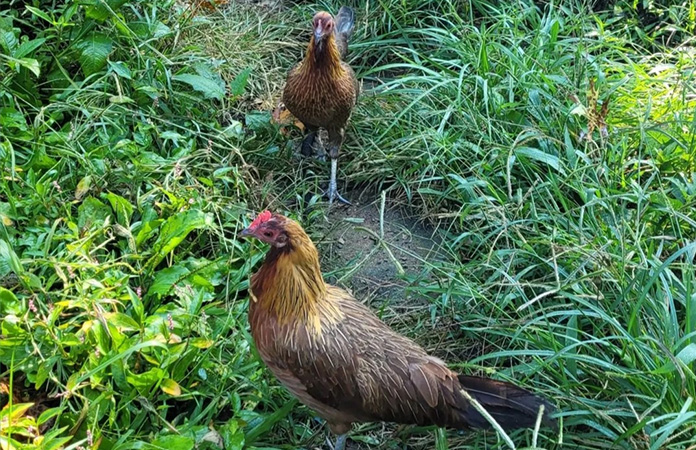
Phoenix chickens are friendly regarding their interaction with humans, but it takes some effort to socialize them properly. Handling chicks when they are young is recommended so they become accustomed to human interaction.
Phoenix chicken tends to be on the low end of the pecking order. They are not dominant toward other chickens, but roosters can be a little more aggressive during mating season.
Phoenix Breed History
The Phoenix chicken finds its origin in Germany. It is believed that the breed was created by Hugo du Roi, the first president of the National German poultry association, in the late nineteenth century.
The name ‘Phoenix’ comes from the mythical bird of the same name, which was believed to rise from the ashes of its own destruction.
Du Roi crossbred a few delicate imported long-tailed Japanese birds that were similar to the Onagadori with other breeds, including Combattant de Bruges, Krüper, Leghorn, Malay, Modern Game, Old English Game, Ramelsloher, and Yokohama.
The Onagadori breed, a Japanese long-tailed chicken, is known for its unique tail feathers reaching up to 12 feet long. It is thought to have a recessive gene preventing it from molting yearly.
However, this gene was not transferred to the Phoenix, so its tail feathers do not reach the same remarkable lengths as those of the Onagadori breed. The tail feathers of the Phoenix can reach 35 inches or more.
The silver variety of the Phoenix was accepted into the American Poultry Association Standard of Perfection in 1965, and the gold variety was accepted in 1983. In 2017, the American Poultry Association Standard of Perfection recognized the black-breasted red variety of the Phoenix.
Summary
The Phoenix chicken is a long-tailed chicken breed that is relatively high-maintenance. But their unique and striking appearance, with tails that can reach up to 3 feet long, make them a popular choice for exhibition purposes.
While they are not known for their egg-laying abilities, they are active and docile birds that can make great additions to a backyard flock or free-range estate.
Related Questions
A Phoenix chicken is a heritage breed of long-tailed chickens with a unique appearance known for it’s high-maintenance and popularity in exhibitions.
Phoenix hens lay cream to tinted eggs.
Phoenix hens are poor egg layers. They lay around 100-150 eggs yearly, a maximum of three to four eggs per week. All eggs are small in size
No, Phoenix chickens are not considered beginner-friendly because they require more care than other breeds. They need more space, higher roosts, and more protein, and they can be aloof personality-wise.
Credits Featured Image: @littlecabinbigwoods (IG)






















